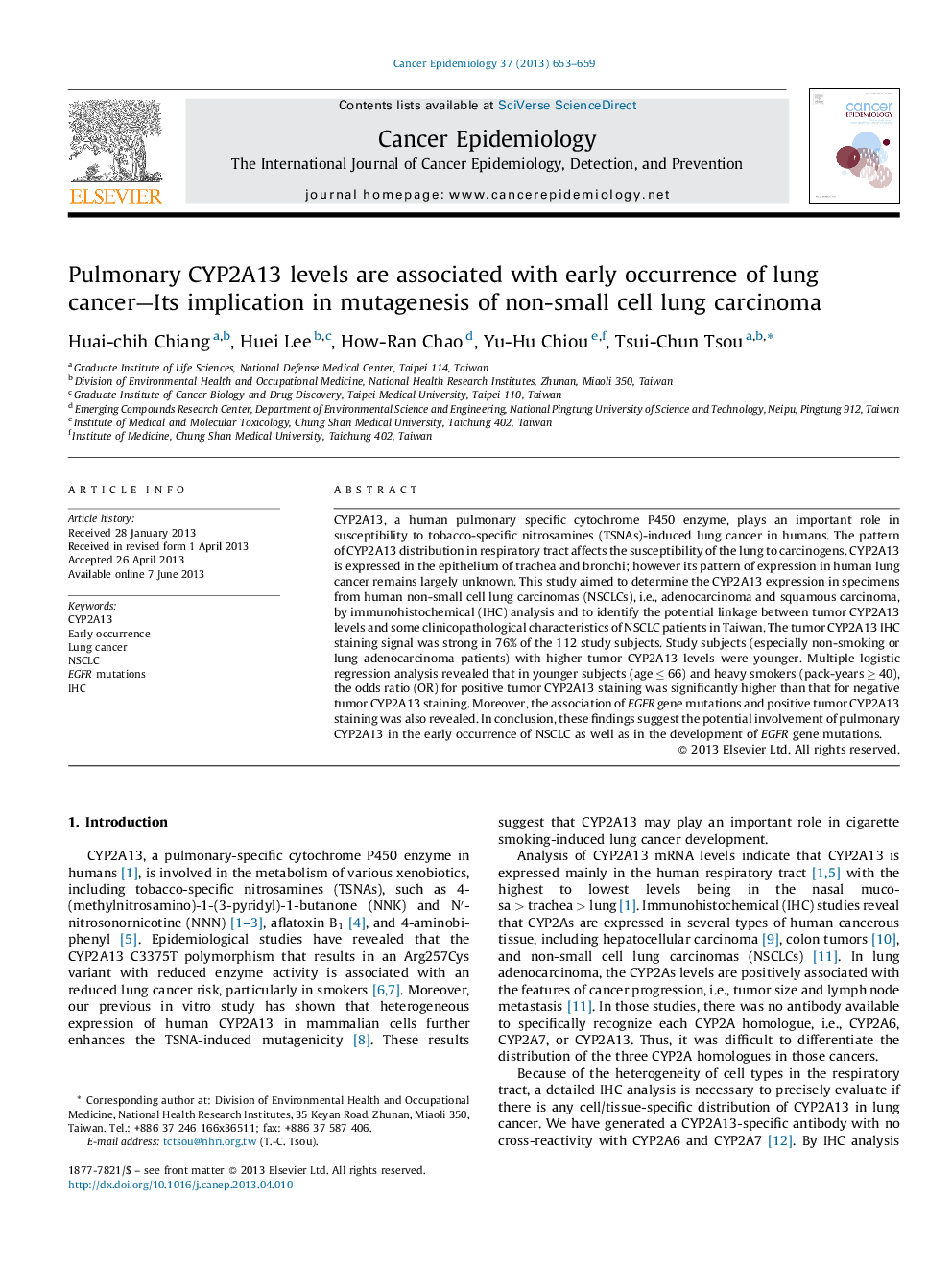| Article ID | Journal | Published Year | Pages | File Type |
|---|---|---|---|---|
| 2109019 | Cancer Epidemiology | 2013 | 7 Pages |
CYP2A13, a human pulmonary specific cytochrome P450 enzyme, plays an important role in susceptibility to tobacco-specific nitrosamines (TSNAs)-induced lung cancer in humans. The pattern of CYP2A13 distribution in respiratory tract affects the susceptibility of the lung to carcinogens. CYP2A13 is expressed in the epithelium of trachea and bronchi; however its pattern of expression in human lung cancer remains largely unknown. This study aimed to determine the CYP2A13 expression in specimens from human non-small cell lung carcinomas (NSCLCs), i.e., adenocarcinoma and squamous carcinoma, by immunohistochemical (IHC) analysis and to identify the potential linkage between tumor CYP2A13 levels and some clinicopathological characteristics of NSCLC patients in Taiwan. The tumor CYP2A13 IHC staining signal was strong in 76% of the 112 study subjects. Study subjects (especially non-smoking or lung adenocarcinoma patients) with higher tumor CYP2A13 levels were younger. Multiple logistic regression analysis revealed that in younger subjects (age ≤ 66) and heavy smokers (pack-years ≥ 40), the odds ratio (OR) for positive tumor CYP2A13 staining was significantly higher than that for negative tumor CYP2A13 staining. Moreover, the association of EGFR gene mutations and positive tumor CYP2A13 staining was also revealed. In conclusion, these findings suggest the potential involvement of pulmonary CYP2A13 in the early occurrence of NSCLC as well as in the development of EGFR gene mutations.
